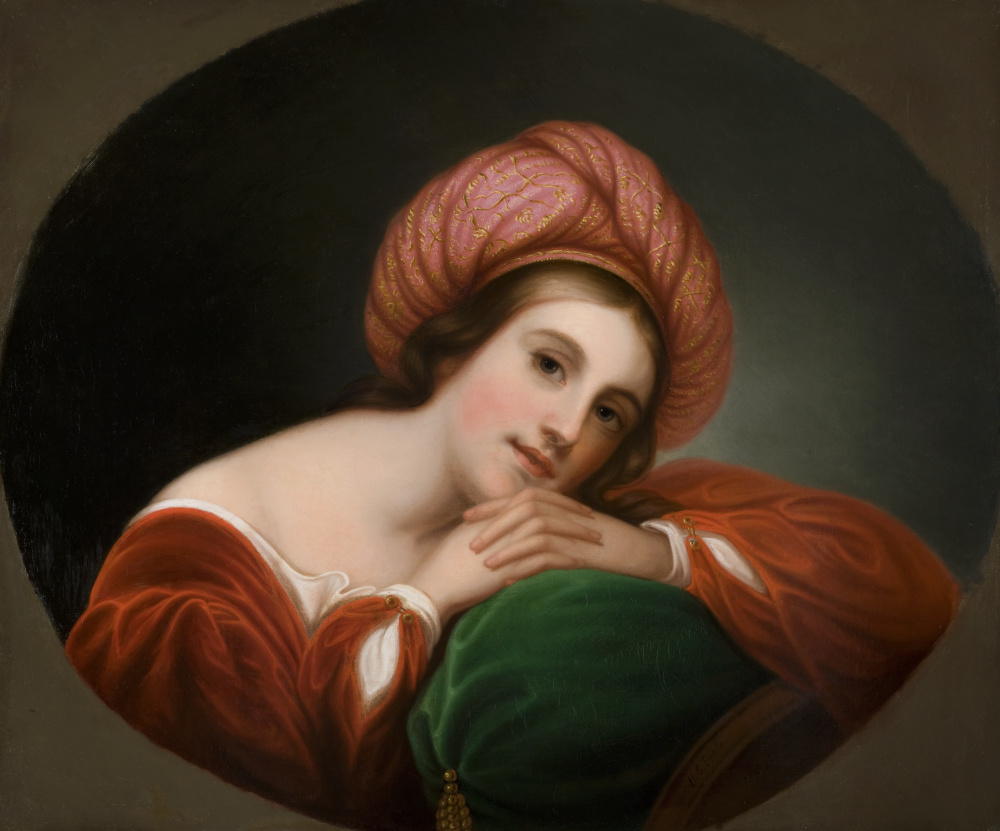- Open today, 10 am to 5 pm.
- Parking & Directions
- Free Admission
Object of the Week: Portrait of a Lady (Harriet Cany Peale), A Gift from Walter P. Chrysler, Jr.
–Corey Piper, PhD, Brock Curator of American Art

Rembrandt Peale (American, 1778-1860), Portrait of a Lady (Harriet Cany Peale), ca. 1840, Oil on canvas, mounted on panel, Gift of Walter P. Chrysler, Jr., 71.687
Rembrandt Peale seemed destined for an artistic life. His father, the prominent painter-turned museum-keeper Charles Willson Peale, bestowed upon him a distinguished name from the history of art and trained him from a young age in the art of portraiture. At age seventeen, Rembrandt painted a portrait of George Washington from life alongside his father. When the elder Peale retired from painting to devote himself more fully to running his museum, he recommended his son to the public as his successor in the realm of portraiture. Rembrandt supported himself, in part, by making copies after his most famous portrait of Washington known as the “Patriae Pater” portrait, as seen in a print which was included in Walter P. Chrysler, Jr’s 1971 gift to the City of Norfolk. His rewarding but nomadic career landed him stints in cities throughout the United States, including Boston, Baltimore, and Philadelphia, where he settled by 1831.
It was in Philadelphia that Peale met the subject of Portrait of a Lady (Harriet Cany Peale), also a gift from Walter P. Chrysler, Jr. Harriet Cany was a fellow artist whom Rembrandt would wed on November 6, 1840. That same year, Cany exhibited her work at the Artist’s Fund Society, where this portrait was also likely on view along with Rembrandt’s own self-portrait. Harriet Cany Peale would go on to exhibit regularly at the Pennsylvania Academy of Fine Arts throughout the next two decades. She sometimes exhibited copies after paintings, like the Chrysler’s Ideal Portrait, a copy after a painting by Rembrandt Peale that is now lost.
The couple nurtured a strong and loving relationship centered on their love of the arts. The two painters often worked beside each other, and Harriet likely contributed to the production of Peale’s Patriae Pater portraits, which accelerated after 1840. She also continued to develop her own independent artistic acumen in portraiture, seen in the sensitive depiction of her husband in a portrait from 1848 now at the Pennsylvania Academy of the Fine Arts.

Harriet Cany Peale (American, ca, 1800–1869), Ideal Portrait, ca. 1843–48, Oil on canvas, Gift of Mr. Edward J. Brickhouse, 64.513
Walter P. Chrysler, Jr. purchased Portrait of a Lady (Harriet Cany Peale) from David David, Inc., a Philadelphia Gallery, sometime between 1967 and 1971 when it was gifted to the City of Norfolk. It’s not clear whether Chrysler sought out the painting for its resonance with the example of Harriet Cany Peale’s work already in the collection or admired it simply as a superb example of one of early America’s premier portraitists. Regardless of his original intentions, the prudent addition enhanced the Museum’s representation of the Peale family within the collection, joining a trio of portraits by family patriarch Charles Willson Peale, which the Museum received in the 1960s, and a portrait of George Washington by Charles Peale Polk, Charles Willson’s son and Rembrandt’s cousin.

